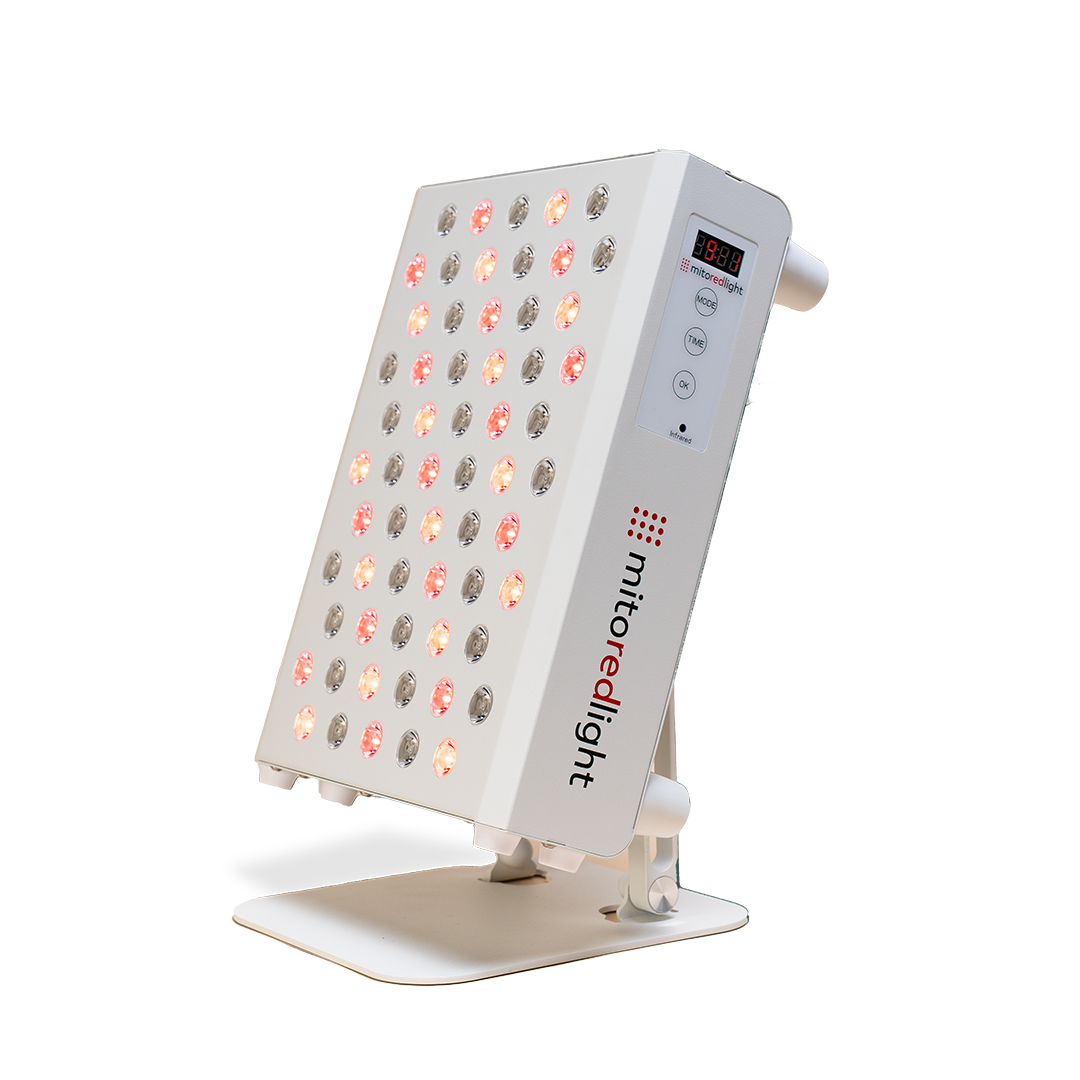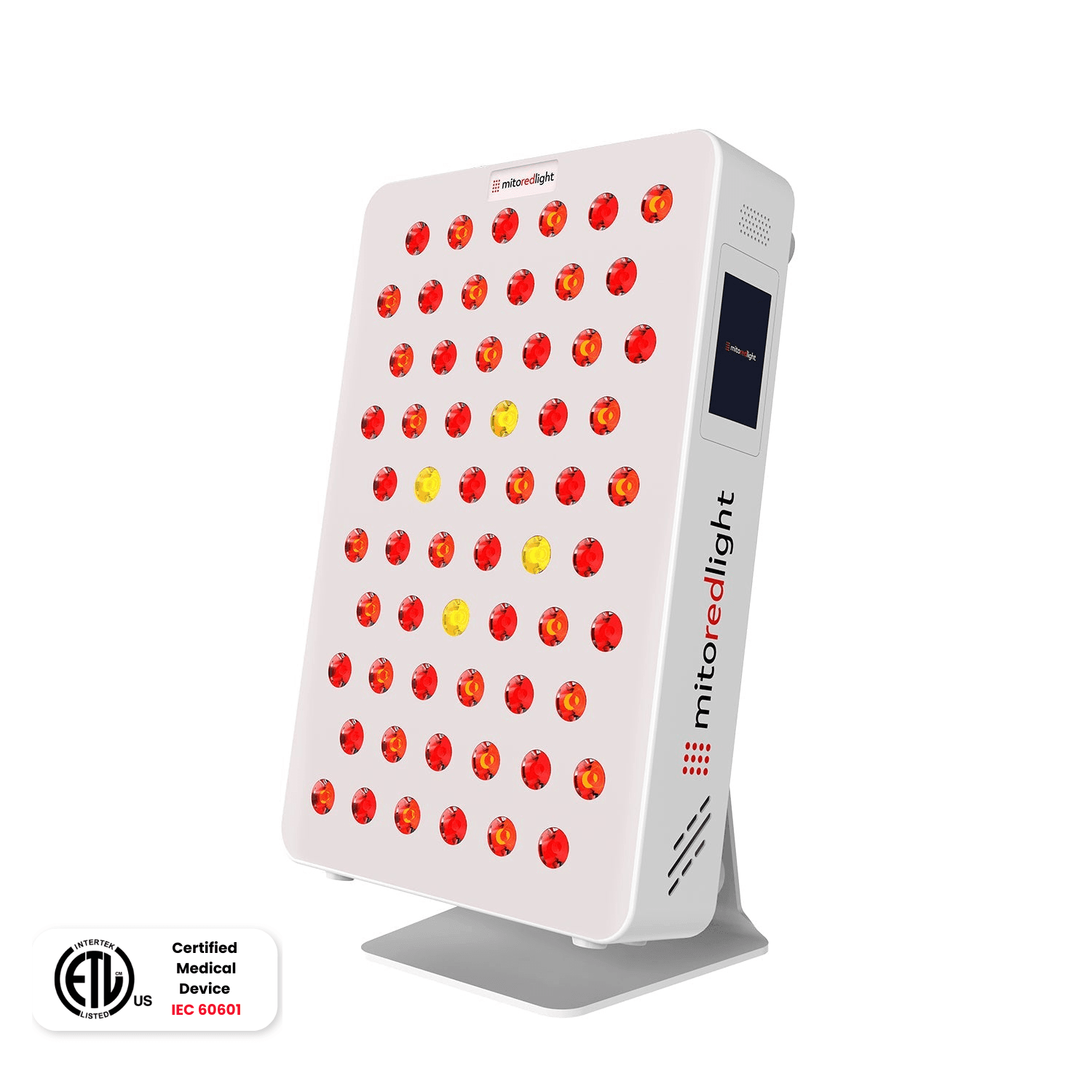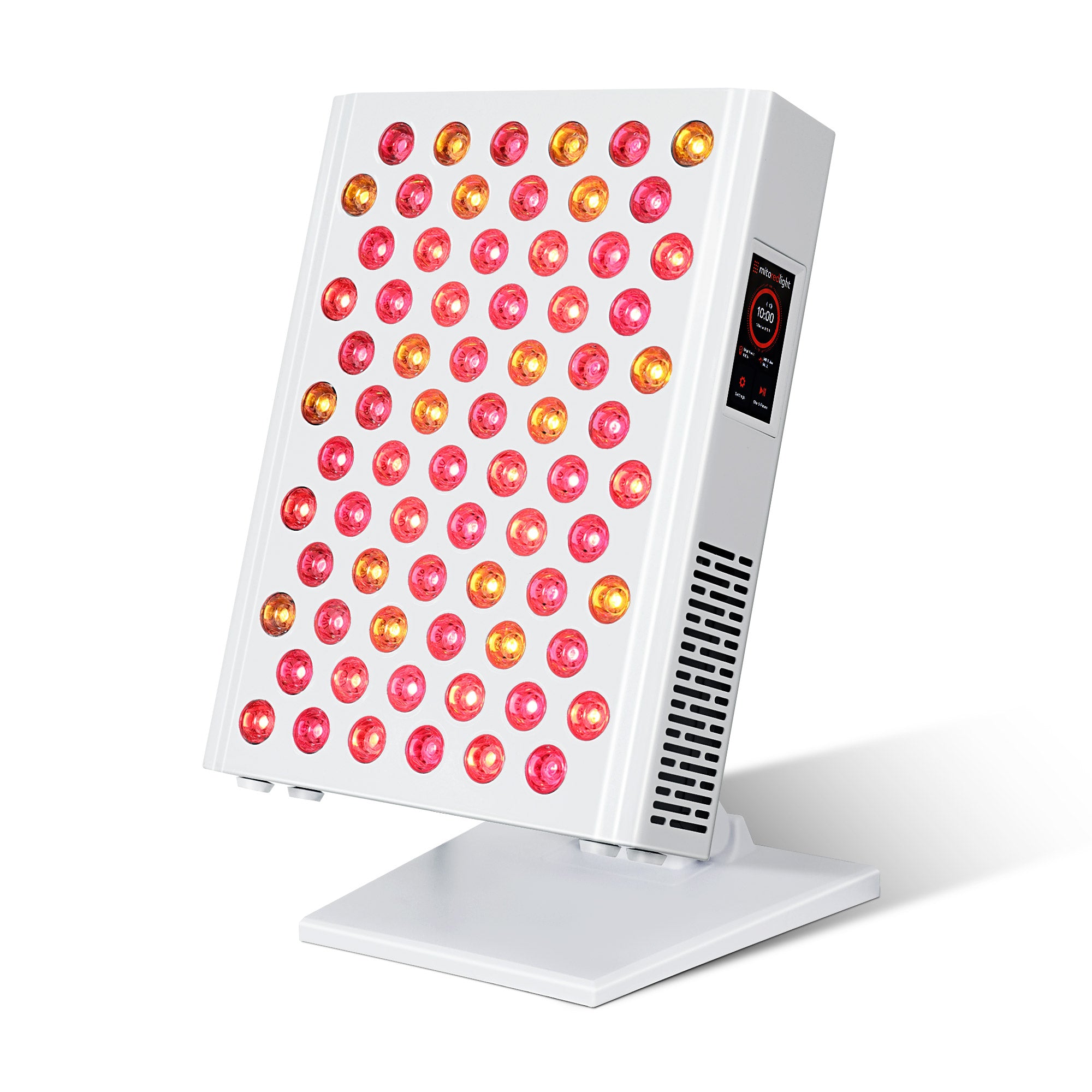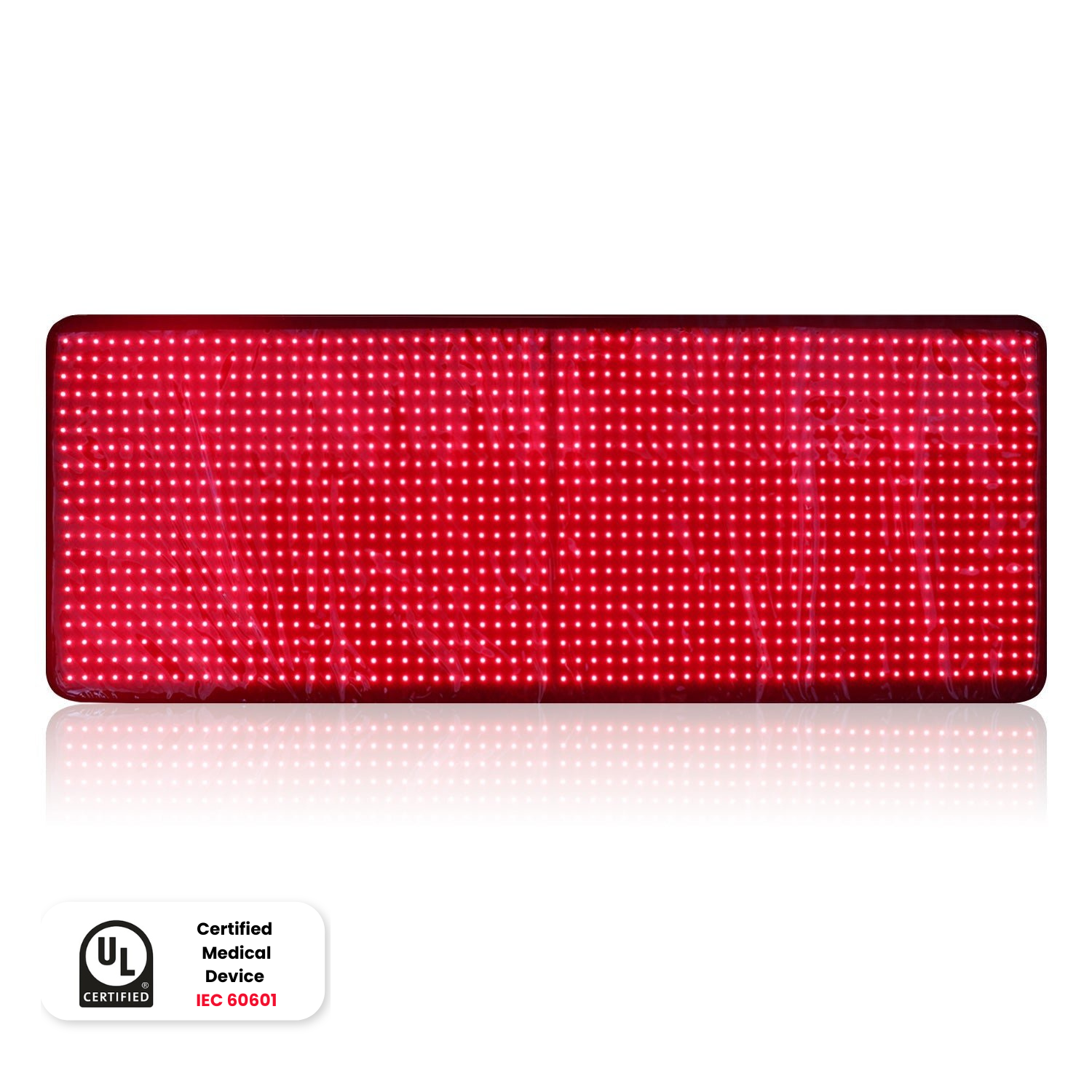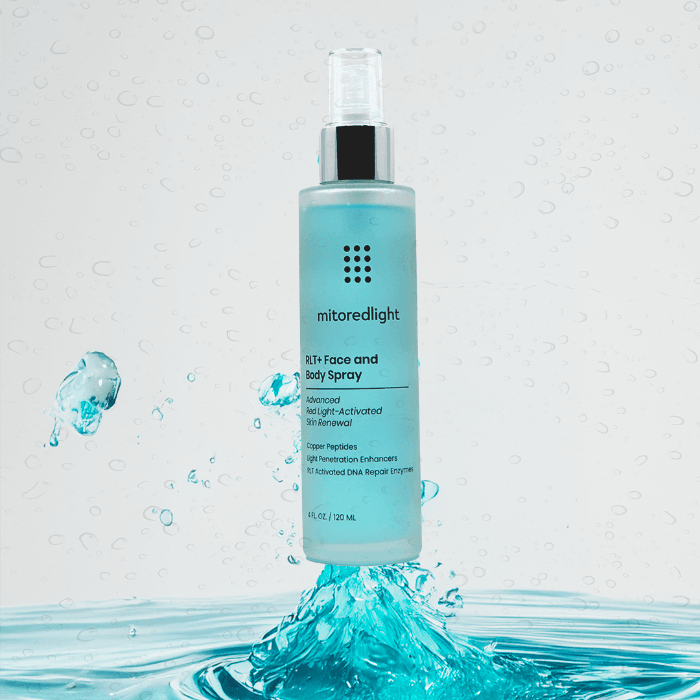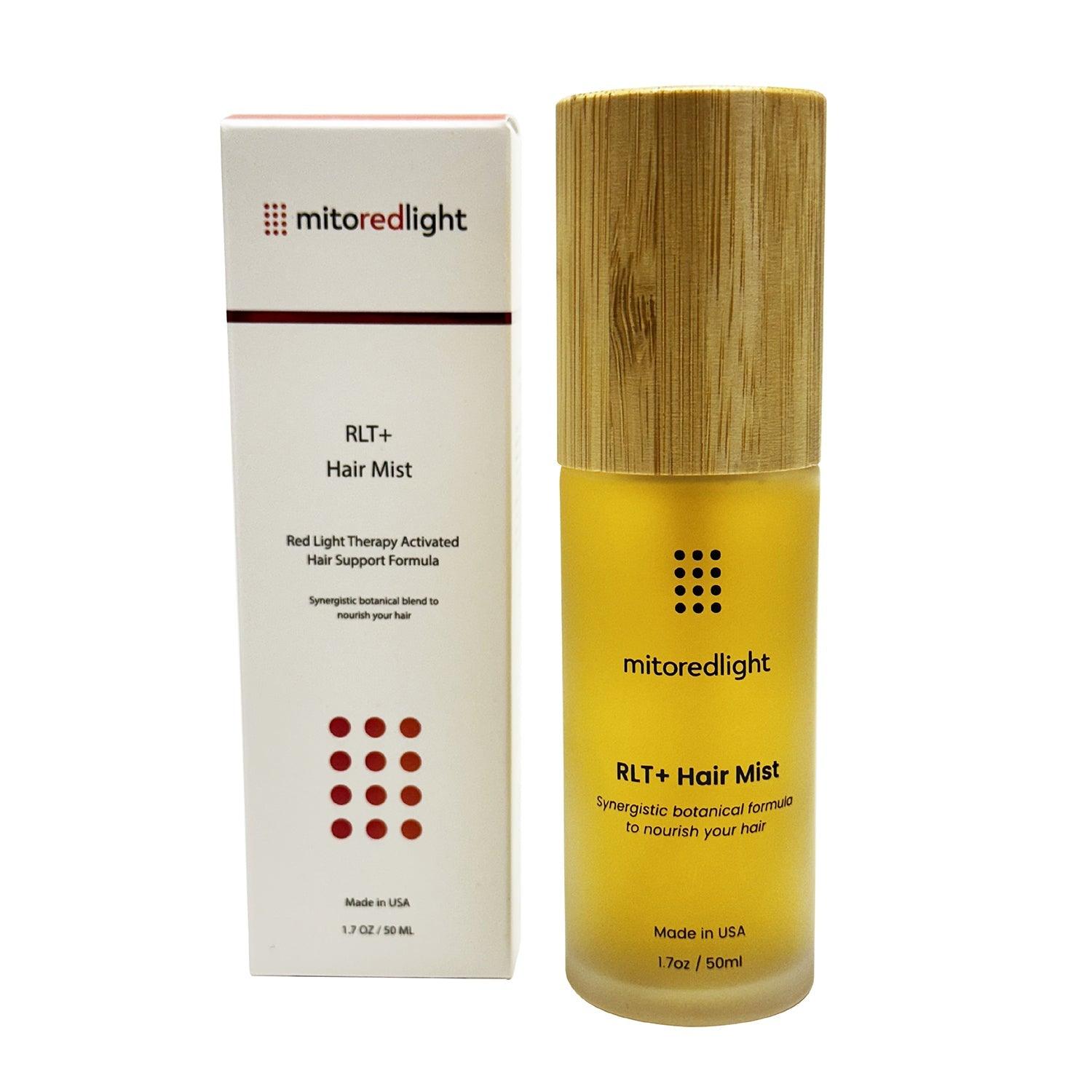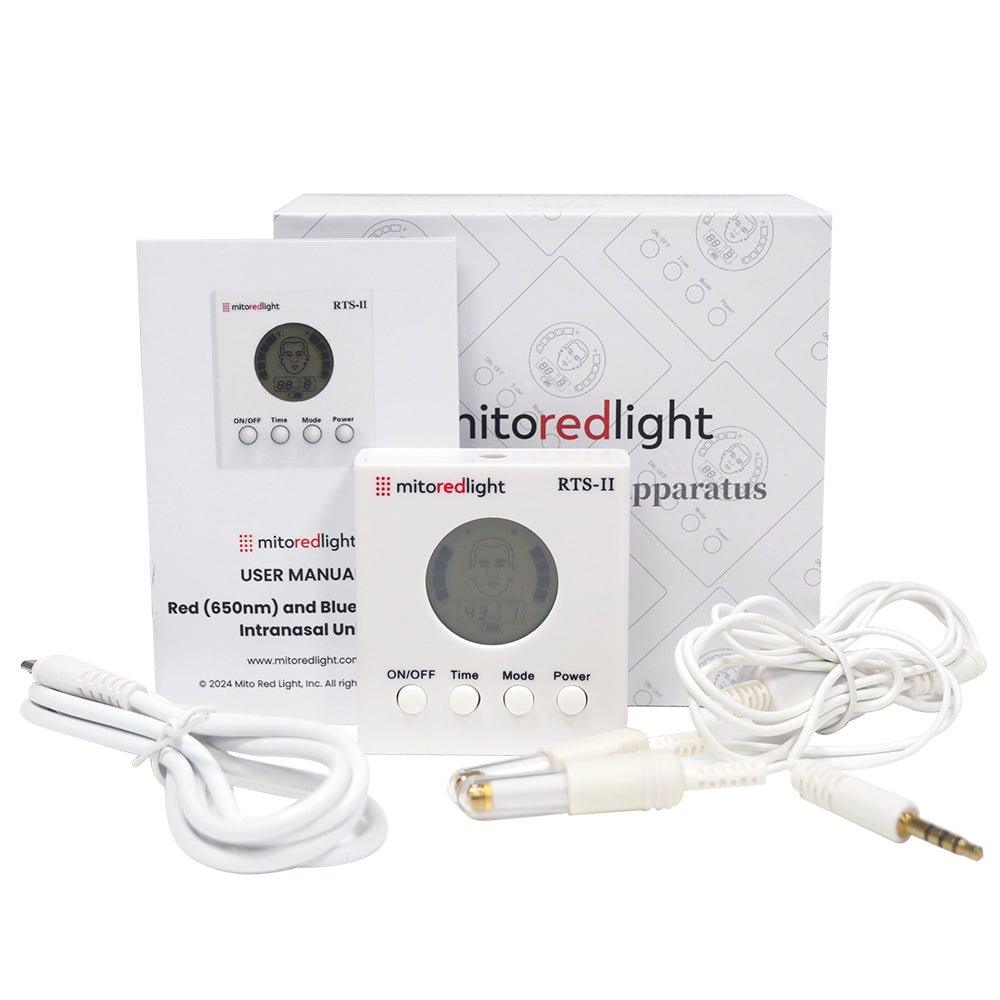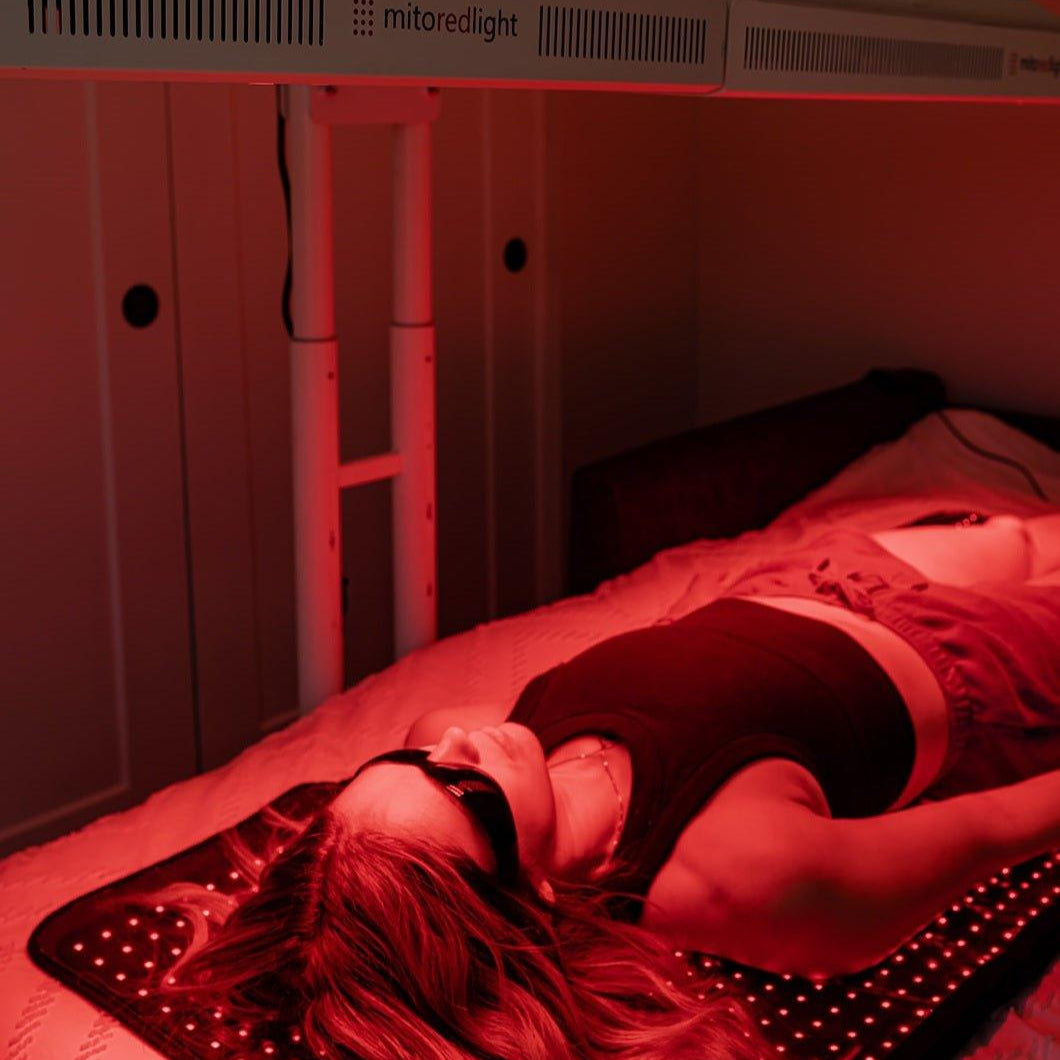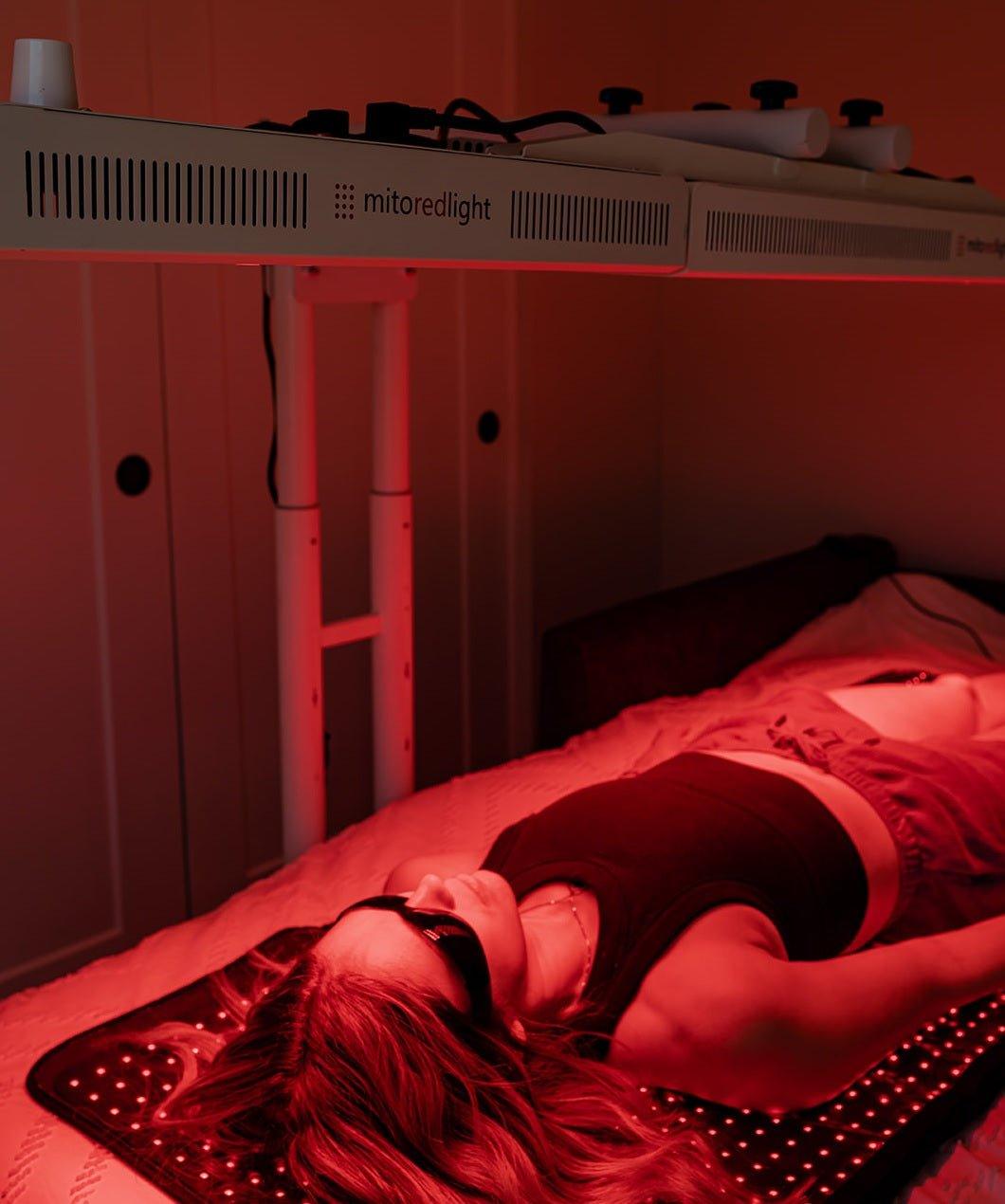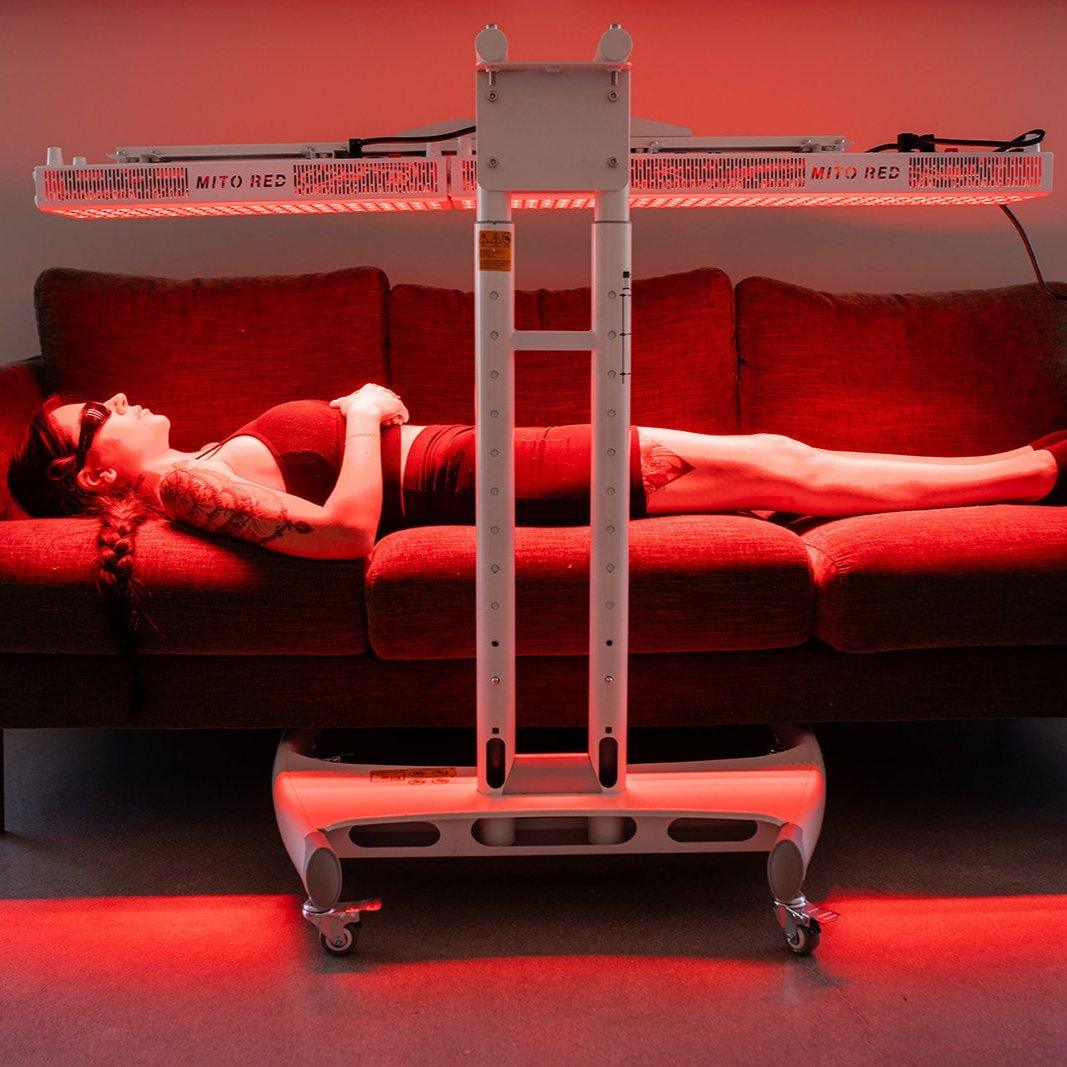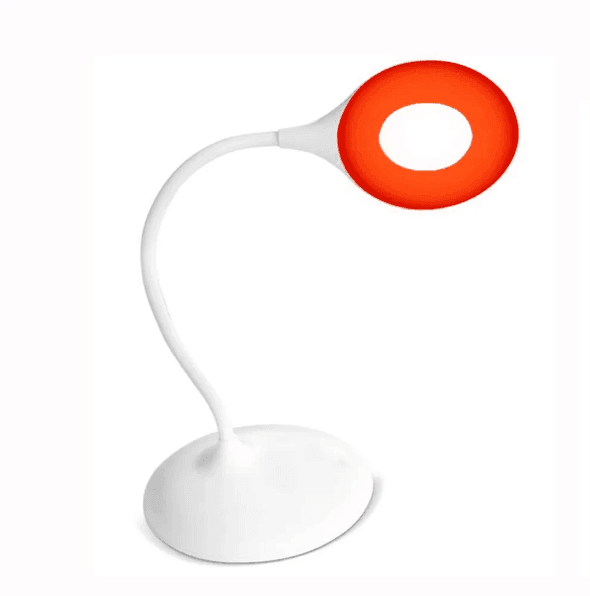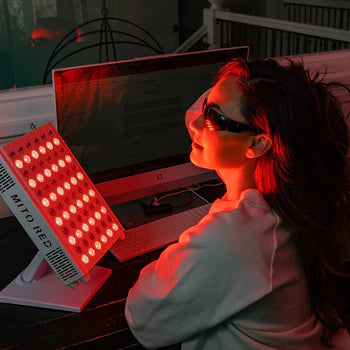DISCLAIMER: Mito Red Light devices are not clinically proven to diagnose, treat, cure, or prevent any medical conditions. Mito Red Light devices are low / risk general wellness devices aimed at affecting the body through supporting cellular function. The scientific studies referenced in this article are for educational and informational purposes only and are meant to educate the reader on the exciting and growing field of phototherapy. To see a list of precautionary warnings and contraindications, click here
Table of Contents
- Energy from the Sun
- Melatonin, Mitochondria, and Cell Health
- The Antioxidant Effects of Melatonin
- Night time Melatonin
- Daytime Melatonin
- Near Infrared Light and Melatonin
- Factors Affecting Infrared Light from the Sun
- How to Get infrared Light Exposure
- Mito Red Light
A recent video lecture by a medical professor outlined how vital the role of light is to human health and how modern advances have limited the health benefits that we experience from light.
Roger Seheult, MD, is an associate professor at the University of California (UC) Riverside School of Medicine and cofounder of the online medical education company MedCram. Seheult is Board Certified in Internal Medicine, Pulmonary Disease, Critical Care, and Sleep Medicine, making him part of a small, elite group of physicians who are quadruple-board certified.
Seheult’s recent medical lecture was released as an almost 2-hour YouTube video entitled Sunlight: Optimize Health and Immunity (Light Therapy and Melatonin) on January 21, 2022. In this lecture, Seheult explores how sunlight interacts with melatonin to protect cell health, how humans are becoming increasingly deficient in sunlight exposure, and the impact this is having on people’s overall health.
Energy from the Sun
In his recent lecture, Seheult begins by discussing how important sunlight is known to be for health. While many people naturally tend to think of sunlight as stimulating vitamin D, Seheult explains that there are many other potential benefits to sunlight.
Before delving into how sunlight can affect the body, Seheult highlights the different types of light the sun produces. About 7% of the sun’s energy that reaches Earth is ultraviolet light, an invisible form of light known for stimulating vitamin D production. While devices like a vitamin D lamp can mimic this effect safely in controlled doses, excessive UV exposure from the sun is also linked to sunburns and increased skin cancer risk.
39% of the energy from the sun reaches the earth as visible light, Seheult says, enabling us to actually see and interact with the world around us. This visible light plays a role in the subconscious sleep-wake cycles that our body experiences.

Importantly, Seheult observes 54% of energy from the sun is an infrared light that cannot be seen. This form of light is heavily focused on by Seheult as it provides many health benefits that have only recently been recognized by the medical community.
Seheult explains that modern humans have experienced low amounts of exposure to energy from the sun. According to Seheult, research shows that the average person spends 87% of their lives inside buildings and another 6% of their lives inside of vehicles. This means that the average person in modern times will have little to no exposure to sunlight for 93% of their life.
Melatonin, Mitochondria, and Cell Health
After laying the foundation of exploring different types of energy from the sun, Seheult shifts to explaining the basics of melatonin and how it impacts cell health. Melatonin, Seheult explains, is a powerful antioxidant that helps improve cell health.
Seheult describes how melatonin, as an antioxidant, helps to reduce oxidative stress on cells. Oxidative stress, he says, is analogous to overheating in an engine. Like an engine burns fuel to produce movement, our cells metabolize sugar to produce energy in small subcellular organs called mitochondria. As an engine burning fuel causes heat as a byproduct, our cells produce oxidative stress as a byproduct of making energy.
Oxidative stress can play an important role in some biological processes, Seheult says but can be harmful to the energy-producing mitochondria. When too much oxidative stress builds up, it can increase the risk of cancer, dementia, diabetes, and learning disabilities.
The Antioxidant Effects of Melatonin
To combat oxidative stress, one of our body’s most powerful tools is melatonin, Seheult explains. Melatonin is commonly known as a sleep hormone but has a role that goes far beyond just helping to regulate sleep.
When cells produce energy, they use a chemical process called the Krebs cycle to turn sugar into a chemical called NADH. Energy is then extracted from NADH using a series of chemical reactions within the mitochondria; this series of reactions are collectively referred to as the electron transport chain as they transfer electrons down a gradient, extracting energy with each step.
The electron transport chain can be messy, Seheult says, creating reactive oxygen molecules that can damage the mitochondria. Melatonin acts as a powerful antioxidant that neutralizes these reactive oxygen molecules, restricting them from damaging the mitochondria and causing inflammation and damage within the cells.
Melatonin is a crucial chemical for reducing oxidative stress, Seheult observes, and is available to the body in two different ways, depending on the time of day.
Nighttime Melatonin
Melatonin is best known for its role at nighttime. Melatonin is released by the pineal gland in the brain in response to decreased light. Seheult explains how melatonin starts to be released by the pineal gland around 9:00 pm as daylight begins to fade.
This occurs because, in addition to activating cells in the eyes connected with sight, light also interacts with photosensitive retinal ganglion cells in the eyes. The process with which light interacts with these cells is subconscious and imperceptible. These cells connect with the suprachiasmatic nucleus, which ultimately provides signals that tell the brain to release melatonin.
Importantly, Seheult observes, the retinal ganglion cells are primarily sensitive to bright and blue shades of light. As the sun goes down, the bright daylight fades to warmer, orange hues. For most of history, humans have relied on either warm-colored sunset lighting or red and orange-hued fire for evening light. In modern times, however, bright indoor lighting and screens have artificially provided the bright blue shades of light that inhibit the release of melatonin.
As it is released into the bloodstream, melatonin promotes sleep; however, Seheult shows how it does more than help people achieve a deep slumber. Melatonin in the bloodstream travels to cells throughout the body, helping to reduce oxidative stress that has accumulated throughout the day and improving mitochondrial health.
Daytime Melatonin
While nighttime melatonin is vital to sleep and mitochondrial health, Seheult explains that researchers have learned that it actually plays an important role in mitochondrial health during the day, as well.
Seheult highlighted studies that show only 5% of the body’s melatonin is actually produced in the pineal gland and released into the bloodstream. The other 95% of melatonin is produced directly within the mitochondria and is present at the site where it reduces oxidative stress.
Driving this process is sunlight, Seheult says, but in a very different way than it stimulates melatonin during the night. At nighttime, melatonin production occurs because bright sunlight is no longer interacting with cells in the eye. During the day, however, sunlight interacting directly with mitochondria is what stimulates melatonin production.
Near Infrared Light and Melatonin
Seheult explains how the last step of the electron transport chain involves a molecule called cytochrome C oxidase. This chemical is stimulated by near-infrared light, the invisible light from the sun that makes up about 54% of the sun’s energy. When cytochrome C oxidase is stimulated, it encourages the production of melatonin within the mitochondria.
The melatonin that is created within the mitochondria is different from the melatonin released at night in that it stays within the cells and does not enter the bloodstream. It is melatonin in the bloodstream that creates tiredness and encourages sleep; when it remains inside the cells, this effect does not occur.
When melatonin is produced directly within the mitochondria, it is present right at the point where the oxidative stress is occurring, allowing it to quickly neutralize this stress before it causes any damage. This process is optimized for daytime when mitochondria are working their hardest and oxidative stress is most likely to occur, Seheult says.
Factors Affecting Infrared Light from the Sun
Seheult points out several things that are important to consider when thinking about how infrared light from the sun is absorbed. The first thing he highlights is that infrared light is good at penetrating deeply through outer layers of skin and tissues and even through clothes.
The ability of infrared light to penetrate deeply is due to its low frequency, Seheult says. He compared this property of infrared light to sound, using the analogy of a car playing loud music. Low-frequency sounds, like the beat of a bass drum, penetrate far more deeply than the sounds of higher pitches like an air guitar. This is why someone in the car next to them will only hear the sound of the drums, which penetrates deeper, and not the higher-pitched instruments. Infrared light works the same way, penetrating deeper, while higher-frequency ultraviolet light can be blocked by a thin layer of clothes or sunscreen.
Seheult explains that there are some things, however, that do tend to block infrared light from penetrating deep into tissues. One potential barrier is extra fatty tissues. Seheult discusses how obesity can lead to decreased reach of infrared light into the mitochondria of deeper tissues, potentially leading to health problems.
Seheult also explained that Low-E windows have been a recent technological development that has impacted people’s exposure to infrared light. Low-E windows are specifically designed to reduce the amount of infrared light that enters buildings, helping to avoid extra heat from accumulating inside. The tradeoff for this is that the health benefits of infrared light are becoming increasingly unavailable indoors.
How to Get Infrared Light Exposure
The answer for getting more infrared light is more sun, Seheult says. Infrared light can be absorbed through clothes and is reflected by green vegetation. This means that even in the shade, grass and trees can reflect infrared light and provide a health benefit. This also means that you can be fully clothed and still enjoy the benefits of infrared light in most areas of your body.
The key to being able to tell if you are getting infrared light, Seheult says, is to see if you can feel the heat of the sun. The feeling of warmth from the sun through clothes or through a window is primarily caused by infrared light, he says, as other forms of energy from the sun will not normally penetrate through those barriers. A thick jacket may prevent you from feeling the sun, indicating that the infrared light is not reaching your skin, while a t-shirt may not have the same type of blocking effect.
Mito Red Light
Mito Red Light recognizes that with our modern lifestyles, there is a reason people are indoors more. We are committed to helping you stay as healthy as possible with minimal disruption to your lifestyle. This is why we offer a variety of high-quality red light therapy products to help you get some of the beneficial infrared wavelengths of light the sun provides without having to leave your home or office.
Our goal is to make the benefits of red light therapy available for everyone. We welcome you to review our selection of high-quality products or to contact one of our expert representatives at +1 866-861-6486.
